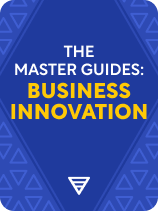

This article is an excerpt from the Shortform book guide to "The Master Guides: Business Innovation" by Shortform. Shortform has the world's best summaries and analyses of books you should be reading.
Like this article? Sign up for a free trial here.
Are you scared to try something new for your next innovation project? Why is a hypothesis in business research important?
The uncertainty of how customers will react to your new product may scare you from even trying to create it. But if you create a hypothesis, just like you would with the scientific method, you’ll have a better chance of succeeding because you’re testing the waters.
Check out how a hypothesis will improve the chances of your business research pulling out a win.
Using a Hypothesis for an Innovation Project
In The Lean Startup, Eric Ries points out that the biggest challenge in managing an innovation project (especially one that takes the form of a new startup company) is the uncertainty involved in doing something new. His strategy for overcoming this challenge involves using a hypothesis in business research, which he uses to gather data that eliminates uncertainties as efficiently as possible.
First, formulate a hypothesis. What do you believe about your product or your customers that’s vital to your business? Then, build the minimal product necessary to test your hypothesis. Observe the behavior of your prototype or of users who interact with it. Then analyze the data and reflect—how far off was your hypothesis? What do you need to change about your strategy? Should you actually change your entire direction? Based on your conclusions, update your hypothesis or create a new one and repeat the process.
The faster you move through this loop, the faster you’ll learn and the sooner you’ll have enough information to plan and achieve success. (And the less likely the project will be to fail due to financial backers pulling out because they’re not seeing their investment pay off.)
Minimum Viable Products
Ries discusses several types of MVPs (Minimum Viable Products or prototypes) that you can use to test your hypotheses as quickly as possible.
- Landing page MVP: Create a web page describing the features of the product, before a product actually exists. Track clicks and attempted downloads to gauge how much users want it.
- Video MVP: Make a video simulating what the product does. Even without using the actual product, watching the video will give enough info for viewers to decide whether they want the product shown.
- Concierge MVP: Instead of building processes that scale, run manual processes dependent on special white-glove treatment. Often the founders themselves deliver the service. This accelerates learning and allows quick iteration on the product.
- Wizard of Oz MVP: If you plan to build fancy automated technology, try to test it with a human behind the scenes. The human performs the service that the technology does, and the user is none the wiser.
Applying Knowledge to Maneuver for Success
Ries also describes a number of corrective maneuvers, or “pivots” that you may want to make as you learn more about what your customers want by testing iterative hypotheses.
- Zoom-in pivot: Customers like a specific feature of your product. You can pivot so your product now focuses entirely on delivering this feature.
- Customer need pivot: You know your customers well, and the problem you’re solving for them is not very important. You might pivot to target a new customer need, which may entail an entirely new product.
- Business architecture pivot: You might pivot to change between two types of businesses: high margin and low volume, or low margin and high volume. This roughly correlates to a business-to-business (B2B) model, or a business-to-consumer (B2C) model.
- Technology pivot: You’re trying to solve the right problem for the right market, but can do it better (improve performance, reduce cost, or both) by using different technology in your product.

———End of Preview———
Like what you just read? Read the rest of the world's best book summary and analysis of Shortform's "The Master Guides: Business Innovation" at Shortform.
Here's what you'll find in our full The Master Guides: Business Innovation summary:
- The reason why most innovations never lead to growth or profits
- Key principles for implementing innovative ideas that deliver value
- Advice from seven leading experts on overcoming innovation challenges






